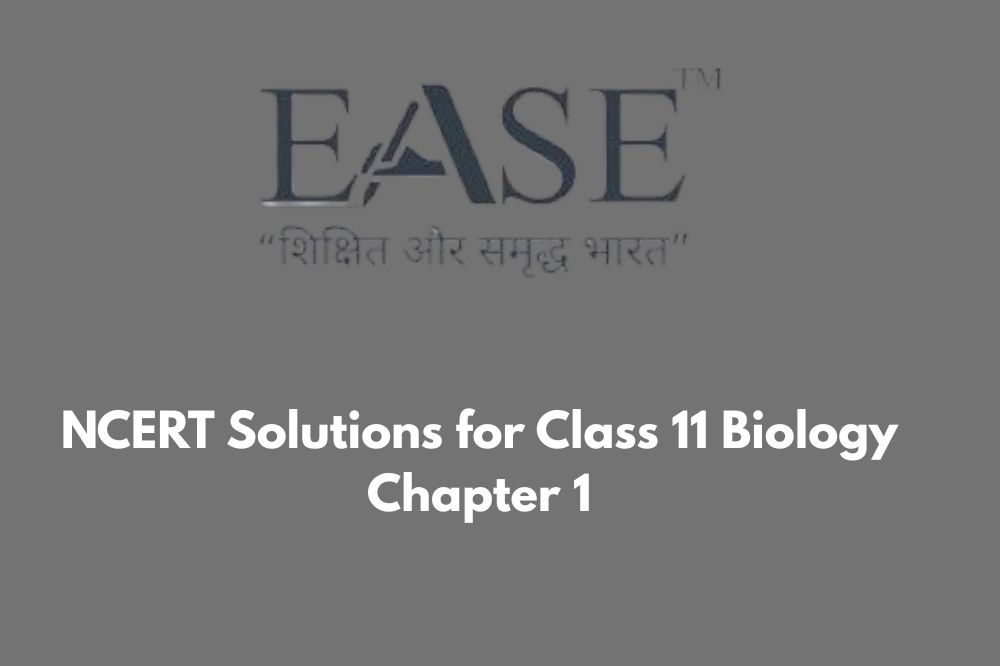Chapter 1 of Class 11 Biology, The Living World, introduces students to the fundamental concept of life and its classification. From understanding what makes an organism “living” to exploring the taxonomic hierarchy, this chapter lays the foundation for advanced biological studies. Below are well-structured, easy-to-understand solutions to all NCERT questions — rewritten for clarity and exam excellence.
Class 12 Hindi Chapter 1 Question Answer
NCERT Solutions for Class 11 Biology Chapter 1
Q1. Why are living organisms classified?
Classification helps organize the vast diversity of life on Earth. It eliminates confusion caused by regional names and enables scientists to study organisms systematically using a universal naming system.
Q2. Why are classification systems changing?
As science evolves, so do classification methods. Earlier systems relied on physical traits and habitats; modern systems incorporate genetic, biochemical, and evolutionary data for more accurate categorization.
Q3. What different criteria would you choose to classify people you meet often?
People can be classified based on traits like gender, profession, interests, education level, and behavioral patterns.
Q4. What do we learn from identifying individuals and populations?
Identification reveals key traits such as origin, language, habits, and social roles, helping us understand diversity and relationships within and between groups.
Q5. Given below is the scientific name of Mango. Identify the correctly written name. Mangifera Indica or Mangifera indica?
The correct format is Mangifera indica — with the genus capitalized and the species in lowercase, both italicized.
Q6. Define a taxon. Give some examples of taxa at different hierarchical levels.
A taxon is a unit in the classification system. Examples include:
- Kingdom: Animalia
- Phylum: Chordata
- Class: Mammalia
- Order: Primata
- Family: Hominidae
- Genus: Homo
- Species: sapiens
Q7. Can you identify the correct sequence of taxonomical categories?
Correct sequence: Species → Genus → Order → Phylum
Q8. What do you understand by the term ‘species’? Discuss its meaning in higher plants, animals, and bacteria.
A species is a group of organisms sharing common traits. In plants and animals, reproductive isolation defines species. In bacteria, genetic similarity is used due to asexual reproduction.
Q9. Define and understand the following terms:
- Phylum: Group of related classes under a kingdom.
- Class: Set of similar orders.
- Family: Collection of related genera.
- Order: Grouping of families with shared traits.
- Genus: Cluster of closely related species.
Q10. How is a key helpful in the identification and classification of an organism?
A key uses contrasting features to narrow down and identify organisms. It simplifies classification by guiding users through a step-by-step comparison.
Q11. Illustrate the taxonomical hierarchy with suitable examples of a plant and an animal.
| Taxonomic Level | Wheat (Plant) | Human (Animal) |
|---|---|---|
| Kingdom | Plantae | Animalia |
| Phylum/Division | Angiospermae | Chordata |
| Class | Monocotyledonae | Mammalia |
| Order | Poales | Primata |
| Family | Poaceae | Hominidae |
| Genus | Triticum | Homo |
| Species | aestivum | sapiens |
Benefits of Solving NCERT Solutions for Chapter 1
- Concept Clarity: Builds strong understanding of classification and taxonomy.
- Exam Confidence: Reinforces key definitions and sequences for quick recall.
- Critical Thinking: Encourages logical reasoning through scientific classification.
- Self-Study Friendly: Easy-to-follow answers promote independent learning.
- Strong Foundation: Prepares students for deeper topics in biodiversity and evolution.
Best Books for NFSU Entrance Exam Preparation 2026
FAQs – Class 11 Biology Chapter 1
Q1. What is the main focus of Chapter 1 in Class 11 Biology?
It introduces the concept of life, classification systems, and taxonomical hierarchy.
Q2. Why is binomial nomenclature important?
It provides a universal naming system, reducing confusion caused by local names.
Q3. What is the role of taxonomy in biology?
Taxonomy helps organize and identify organisms based on shared characteristics.
Q4. How does classification benefit scientific research?
It streamlines data collection, comparison, and communication across global research.
Q5. What is the difference between genus and species?
Genus groups closely related species; species is the most specific classification level.
Conclusion
Understanding The Living World is the first step toward mastering biology. These NCERT solutions not only simplify complex topics but also prepare students for competitive exams and future scientific exploration. Keep revising, stay curious, and let biology reveal the wonders of life!

